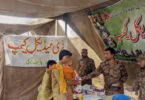F.P. Report
ISLAMABAD: Benazir Income Support Programme (BISP) has been ranked top among globally acclaimed unconditional cash transfer programs through Revised Proxy Means Test (PMT) Formula. The simulated results show that using the revised PMT formula would substantially increase targeting performance and 60.2% beneficiaries would be from the bottom quintile, as compared to 48% in the old formula of 2010 while 87.5% would be from the bottom 2 quintiles as compared to 75% previously – i.e. a remarkable increase of 12.5 percentage points.
This is a simulated result but once the National Socio Economic Registry (NSER) update is completed and the administrative data validates this percentage, it would bring BISP to the top rank among globally acclaimed unconditional cash transfer programs.
Chairperson BISP MNA Marvi Memon termed it a great success for BISP. She said, “We’ve been continuously putting efforts to ensure transparency in the programme, and becoming the pride of Pakistan.” She further said, “I am pleased that the efforts have borne fruit and we have moved from being number five (in 2010) to number one (in 2018).” She further hoped that the increased targeting performance will lead to enhanced and focused poverty eradication efforts.
In 2016, BISP started an extensive consultative process, with the support of global experts, which led to the revision of the PMT formula with several additional features to improve its performance. These features included Improved Welfare Indicator, Excluding Non-Verifiable Indicators, Location Effect and Interaction Effects.
Secretary BISP Mr. Omar Hamid Khan said that he considers it as yet another success of BISP team while sharing that “the entire staff and management has continuously put efforts for the betterment of BISP family.” He further added that this exercise shows how BISP is engaged in testing all its efforts through piloting and simulations before field experience to remove any policy glitches in future.
The revised PMT formula bases poverty measures on expenditure per adult equivalent (instead of per capita) since it takes into account household demographic structure in the calculation of the welfare aggregate.
Moreover, the previous PMT formula included indicators of household head’s educational attainment and children’s enrollment in school that are not easily observable and verifiable. Hence, the updated formula excludes them and includes an indicator of adults’ literacy, which is less prone to measurement error and misreporting.
Further, it has been observed that geographical location is an important determinant of poverty. To capture these effects, the PMT formula now includes indicators of urban status, according to the definition used by the Pakistan Bureau of Statistics. The formula also includes indicators of agro-climatic zones of Pakistan. This is expected to reduce the “rural bias” which was observed in the previous formula.
The previous formula was allocating the same weight to demographics, dwelling characteristics, durables and productive assets in the calculation of the PMT score for all households of Pakistan, irrespective of their characteristics or location. The revised formula incorporates interactions between urban status and agro-climatic zones, and these interactions are significantly better predictors of consumption.
This sets BISP as being an international best practice in safety nets. Chairperson BISP MNA Marvi Memon termed it a goal of the PML-N government. She said that the more accurate the targeting, the more credible the social safety. She further said, “I am pleased that our endeavor to raise BISP’s credibility to serve the real poor vs. the political poor has been established worldwide with this accomplishment. She hoped that the real poor of Pakistan have finally been recognized.






